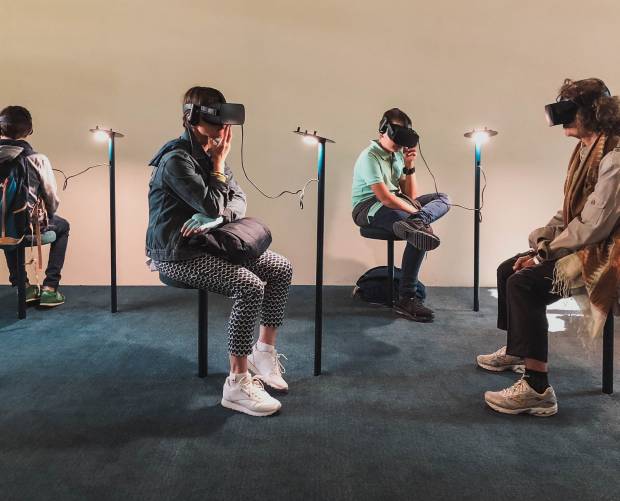 Never let it be said that we are too parochial here at Mobile Marketing Magazine. Theres a whole world outside these shores, so when we were approached by US mobile marketing agency Juice Wireless, we thought it was a great opportunity to see how what theyre doing over there compares to what were doing over here.
Never let it be said that we are too parochial here at Mobile Marketing Magazine. Theres a whole world outside these shores, so when we were approached by US mobile marketing agency Juice Wireless, we thought it was a great opportunity to see how what theyre doing over there compares to what were doing over here.
The company counts AOL, Conde Nast and Gillette among its clients, and in November last year, picked up the Mobile Marketing Associations 2005 Award for Best Use of Mobile Marketing in North America.
We spoke to Chairman and Founder Nick Desai to find out more
MM: I guess what most people would be interested in is how the US compares to Europe and the UK in mobile marketing terms?
ND: Well we have more subscribers than the UK, at around 180 million, but wherever the UK is at, the US is far behind in terms of the broader social acceptance of SMS as a vehicle to respond to any kind of marketing initiative. Here, its still something you have to spell out to people, whereas in Europe, I think the concept of using an SMS (shortcode) as a response mechanism on billboards, movies, TV ads, is much more accepted.
MM: So how do you approach mobile marketing in the States?
ND: We try to do versions of applications that work on your phone, like a system for ordering your favourite pizza on your phone for example. In the US, the brand and media companies are very excited about delivering those types of applications to consumers, but there are various hurdles that we have to overcome.
The first is that there is not a uniform capability on handsets. Theres a lot of variation between them and what they can do. You also have the carriers approaching the deployment of data services for marketing in different ways. So if I wanted to run a program offering a free ringtone from Starbucks, I cant do it on Verizon, because they have a closed deck and walled garden approach and they are not in favour of giving away content. These hurdles make it hard to create programs that will work for a broad range of people.
MM: Can you explain what you mean by versions of applications that work on your phone?
ND: In the US, people of all ages and demographics are doing more and
more on the Internet, from banking to ordering a pizza, so our approach
is to treat mobile as a seamless extension of the Internet on your
computer, on the phone.
MM: Can you give us an example?
ND: Sure. Take Epicurious. Its an online database of 18,000 recipes. So
you find the recipe that appeals to you, and then what would usually happen
is that you hit the Print button, the recipe goes to
your printer, and when youre in the grocery store two days later
trying to get the ingredients you need to make the meal, they are still
sitting at home on your printer. So we have created a mobile
application called Epi To Go which sends the recipe to your phone and
creates a mobile web page with the ingredients for all the recipes you
have marked.
Now you might ask: How is that a mobile marketing application? Well I
would argue that it is because it delivers real, sustainable,
meaningful value to the consumer.
MM: And we would agree with you. It sounds, in fact, as if you guys are
bypassing SMS and going straight on to more sophisticated campaigns
instead.
ND: Maybe. It all comes back to the increasing reliance of people in
the US on the Internet to get through day-to-day life. This is what
gives us the opportunity to create these applications that integrate
with the Internet. The user interface on the phone is limited. People
will always want a small, lightweight phone, so you will never have a
great keypad and screen. Those limitations will not go away, so you have
to look at how you combat them, and the way you do it is by creating
intelligent applications that seamlessly integrate with the Net
experience. You wont search an 18,000-recipe database on your phone.
Where the phone comes into play is for the retrieval of the data, and
that's what it is all about.
The pizza-ordering application is a similar idea. We are talking to one
of the four major pizza chains right now. No one will go through 14
toppings, large or extra large and all that on the phone, but if you
can enter your address and your typical order on your computer and
then 1-click order from your phone on the way home, thats great.
MM: Where do you feel the acceptance levels of mobile as a marketing channel are among client companies?
ND: We struggle with this every day. We spend more money as a
percentage of our GNP on advertising and marketing than any other
country. 13 times as much money per dollar sold as the UK. Given that
environment, and the amount of money going into TV and radio, the
challenge is to get brands to spend money on mobile and to look at it
as an important vehicle.
The biggest problem is that there is not a consistent Vice President of
Mobile Marketing in Big Brand USA. Sometimes its the interactive
agency, sometimes its tied in with the traditional media budget. We
are always talking to different people, and that the most significant
challenge we face.
That said, we have been going since March 2004, and the receptiveness
to this concept has grown from people not knowing what its all about,
beyond the mistaken belief that it has something to do with advertising
on trucks, to people saying: Yes, we have to do something in mobile.
I spoke at the Marketing 50 Conference, where the delegates are the
Chief Marketing Officers of the 50 biggest brands in the US Levis,
Nike etc last year and the year before last. Two years ago, when I asked how
many were considering using mobile marketing, theres wasnt a single hand
went up. Last year when I asked how many had heard about it and planned
to do something soon, every hand went up, so I think we are getting
somewhere.
MM: So whats bringing about the change in attitude?
ND: Well the way we sell it is to say that most media-driven marketing
is not measurable. The Internet is measurable, but TV is not
measurable, in specific terms. Its imprecise. So we try and sell the
fact that what we are providing is the ability to measure the response.
We make advertising actionable.
Lets say you see an ad for a car on the TV. The call to action will be
to go to the Mercedes website and check out the information on this
car. Well thats a very lossy system. How many people will remember
to do that if the PC is switched off and in another room? What if the
ad said: Grab your phone, send a text and you could be an instant
winner.' This makes it actionable, with a specific call to action.
MM: And do you see acceptance of mobile continuing to rise in 2006?
ND: Absolutely. The evolution of peoples acceptance of mobile,
their willingness to embrace it, the conceptual excitement, far exceeds
the pace at which the Net was accepted. But this brings its own challenges,
in terms of the expectations of what mobile can do. We are
afraid that Big Brand USA tries it, and does not have a good experience
because it has been promised things that the medium cant deliver. The
reality of this business is that it takes time. You have to give people
a realistic set of expectations, otherwise, well have the same
situation we had with the Net all over again, where it peaked, slumped, and
then finally settled at a realistic level. That was all because the
expectations created were so far in excess of the reality that a lot of
people pulled back.
Overall, though, were very bullish, because we see the evolution, and
the only way to make it successful is to be aware of the challenges and
continually try to address them and find solutions that other people
have not been able to find. Thats what were trying to do.
Nick Desai was interviewed by Mobile Marketing Magazine Editor, David Murphy
More interviews:
Mike Baker, Enpocket CEO. Read
Bruce Renny, ROK Entertainment Group Marketing Chief. Read Part 1. Read Part 2
.png)



